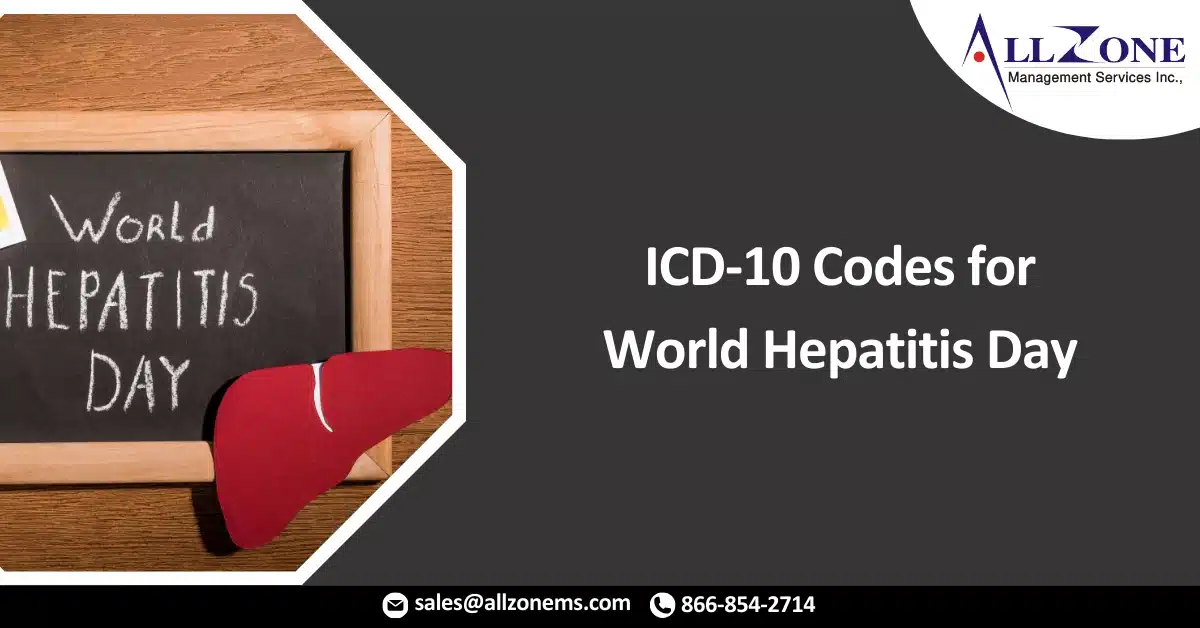Today, we observe ICD-10 Codes for World Hepatitis Day on July 28. According to the World Health Organization (WHO), globally, 354 million people are living with hepatitis B or C. Hepatitis refers to the inflammation of the liver caused by various infectious viruses or non-infectious agents. The five primary strains of hepatitis are A, B, C, D, and E.
• Hepatitis A is typically transmitted through the ingestion of contaminated food or water or direct contact with an infectious person.
• Hepatitis B is a viral infection that is usually transmitted from mother to child during birth/delivery, contact with blood/fluids during sex with an infected partner, or unsafe injections or exposure to sharp instruments.
• Hepatitis C is a blood borne viral infection that is contracted through unsafe injections, unscreened blood transfusions, or sex with an infected partner. Unfortunately, there is no vaccine for this strain.
• Hepatitis D requires hepatitis B to replicate and is usually contracted after the infection of hepatitis B. Treatment success is low for this strain.
• Finally, Hepatitis E is transmitted through the fecal-oral route, usually by contaminated water. Unfortunately, a vaccine for this strain is only available in China and not in any other country.
Looking at it from a coding perspective, viral hepatitis falls within the B15-B19 range. This range includes both acute and chronic viral diseases, and specific coding options are available for Hepatitis A, B, C, and E. With the exception of codes that describe “hepatic coma,” all ICD-10 codes in this range are considered complication/co-morbid conditions (CC). Hepatic coma, also known as hepatic encephalopathy, is a condition in which the brain loses function due to the liver’s inability to remove toxins from the blood. Codes that include hepatic coma are considered major complication/co-morbid conditions (MCCs). Other hepatic conditions include bacterial hepatitis (K75.89) and alcoholic hepatitis (K70.10).
In the Medicare Severity Diagnosis Related Groups (MS-DRGs), viral hepatitis as a principal diagnosis is classified under Major Diagnostic Category 7, which pertains to Diseases and Disorders of the Hepatobiliary System and Pancreas. Specifically, this falls under MS-DRGs 441 (with MCC), 442 (with CC), and 443 (without MCC or CC). It’s important to note that alcoholic hepatitis is classified under MS-DRGs 432 (with MCC), 433 (with CC), and 434 (without MCC or CC), which are medical MS-DRGs. If a liver procedure is performed, then the MS-DRGs will change to 405 (with MCC), 406 (with CC), and 407 (without MCC or CC), which are surgical MS-DRGs.
The key take away from this research is that most cases of viral hepatitis can be prevented through vaccination, and the documentation of hepatic coma is crucial. Vaccination can reduce the incidence of Hepatitis A, B, and D. Additionally, documenting hepatic coma can identify an MCC for the case. Clinical documentation specialists and coders should also be aware of the documentation of confusion or altered mental status in patients with viral hepatitis. If hepatic coma is not documented, then a query should be issued.

